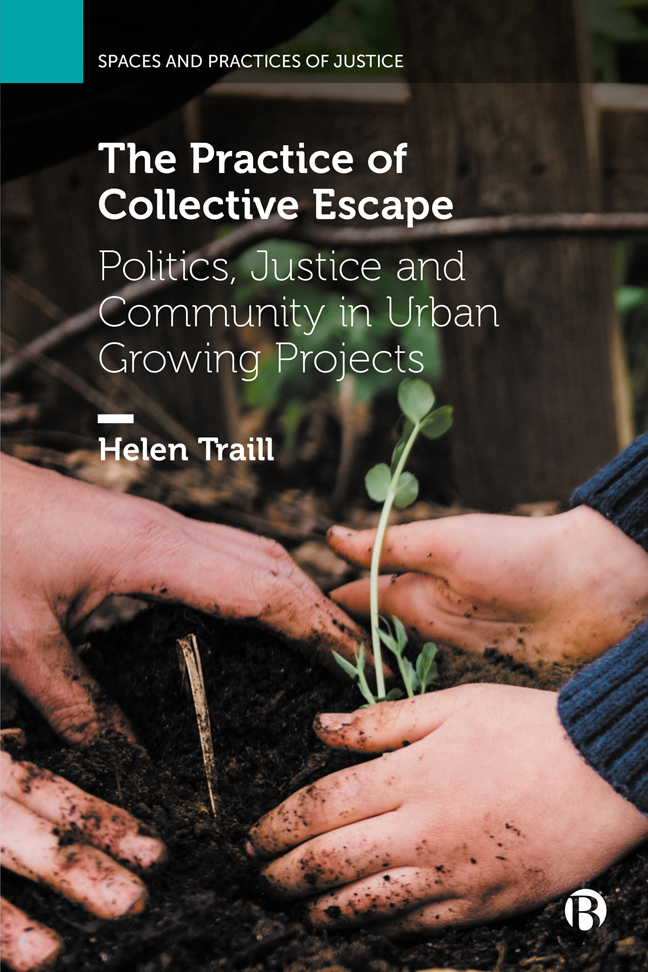Book contents
- Frontmatter
- Dedication
- Contents
- Series Preface
- Acknowledgements
- 1 Introduction
- 2 Urban Growing in Glasgow
- 3 The Rhythms of Urban Escape
- 4 Who Gets to Escape?
- 5 Ownership, Autonomy and the Commons
- 6 Escape into Responsibility
- 7 Field Dynamics and Strategic Neutrality
- 8 The Political Imagination of Common Justice
- 9 Escape, Crisis and Social Change
- 10 Conclusion
- Notes
- References
- Index
5 - Ownership, Autonomy and the Commons
Published online by Cambridge University Press: 23 January 2024
- Frontmatter
- Dedication
- Contents
- Series Preface
- Acknowledgements
- 1 Introduction
- 2 Urban Growing in Glasgow
- 3 The Rhythms of Urban Escape
- 4 Who Gets to Escape?
- 5 Ownership, Autonomy and the Commons
- 6 Escape into Responsibility
- 7 Field Dynamics and Strategic Neutrality
- 8 The Political Imagination of Common Justice
- 9 Escape, Crisis and Social Change
- 10 Conclusion
- Notes
- References
- Index
Summary
Staking claim to history
Pre-1939 – Records show there were never any buildings on this land.
North Kelvin Meadow website‘It’d always been used as historically by kids because the land was sort of connected with the school originally and obviously you know hasn't been built on, you probably know a lot of the history you know, playing fields and so forth.’
Polly (interview, July 2015, emphasis added)‘I’ve thought about [Glasgow City Council’s] arrogance in just deciding that they were going to set all this for building. And we’ve, the old committee established beyond doubt that this land is for leisure use only, and they’ve just ignored it.’
Alasdair (interview, December 2014, emphasis added)In building a claim to the space of the meadow, activists often called on a history of the site that situated it as a pristine space of leisure. It is important for the way the campaigns have portrayed this land that it was never ‘built’ on before, although the surface of the pitches was artificial and it at one time had two changing room buildings on the site. Only one of those now remains, crumbling on the Clouston Street side of the meadow. The lack of historical building on the land is written on laminated posters on the site itself, as well as on the website. In making claims to ‘history’ and the idea that this is ‘established’, Polly and Alasdair, as well as the posters around the site, make knowledge claims about the site and position it as a local community good: as playing fields, as for ‘leisure use’. In invoking history they are also making claims to precedent and legitimacy, to shift what could be seen as an argument for a change of use, to an argument for continuity of use.
This historical perspective, however, was part of a framing of the site that sat awkwardly against earlier periods of activism. Sean, who was active from the mid-1990s until around 2007, took some umbrage with this pristine vision, noting to me in 2016: “They’re talking as if this site has never been developed, never been put forward for any kind of community scheme whatsoever. … But that's not true.”
- Type
- Chapter
- Information
- The Practice of Collective EscapePolitics, Justice and Community in Urban Growing Projects, pp. 73 - 92Publisher: Bristol University PressPrint publication year: 2023

